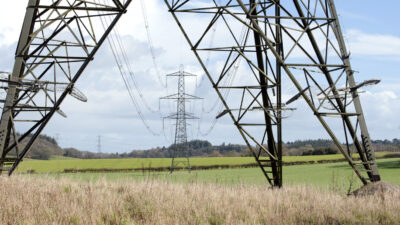Dynamic counterfactuals and merger control: the old, the new and the uncertain
Recent merger cases have seen an increased interest in ‘dynamic’ counterfactuals, where the market would have become more competitive in the future in the absence of the merger. What are these recent developments, how can competition authorities take them into account, and how can advisers help to reduce the uncertainty for the merging parties?
In a number of these cases, such as the Bottomline/Experian and Amazon/Deliveroo cases discussed below, the discussion of competitive effects has gone beyond the current competitive conditions of the merging parties. Adopting a more dynamic approach, the merger analysis has considered the potential loss of future competition. This issue has been discussed at length, especially with respect to ‘killer acquisitions’ in the digital and pharmaceutical sectors, where there have been instances where innovative firms are acquired by incumbents that plan to discontinue (or ‘kill’) the target’s activities, which could reduce future competition and innovation.1
In some instances, competition authorities have considered whether transactions that do meet the review threshold could also reduce future competition and innovation. They have done this by taking a dynamic approach to the assessment of the counterfactual.
The competitive effect of a merger is usually assessed against the counterfactual conditions that would have prevailed in the relevant market(s) without the merger. Guidelines from competition authorities suggest that the competitive conditions that existed at the time of the merger (which are referred to as the ‘status quo ante’) are, in most cases, the relevant counterfactual for evaluating the effect of the merger.2
In some circumstances, however, authorities might take into account reasonable changes in the market that can be predicted following the merger (i.e. a dynamic counterfactual). These might include the entry of firms into, or their exit from, the market, or the realistic prospect of more competitive market conditions after the merger than before it.3 This article discusses the assessment of dynamic counterfactuals by different competition authorities, setting out the previously established approach and highlighting new cases where authorities have raised novel concerns.
Dynamic counterfactuals: the old and the new
The old
The concept of a dynamic counterfactual is embedded in many competition authorities’ guidance documents, and as such it is not a new concept. The relevant extracts from the EU and UK guidelines are presented in the box below.
Overview of the guidelines on the consideration of dynamic counterfactuals in merger reviews
EU merger regulation
In its Horizontal Merger Guidelines, the European Commission sets out the following:1
In assessing the competitive effects of a merger, the Commission compares the competitive conditions that would result from the notified merger with the conditions that would have prevailed without the merger. In most cases the competitive conditions existing at the time of the merger constitute the relevant comparison for evaluating the effects of a merger. However, in some circumstances, the Commission may take into account future changes to the market that can reasonably be predicted. It may, in particular, take account of the likely entry or exit of firms if the merger did not take place when considering what constitutes the relevant comparison.
UK merger regulation
The UK Competition and Markets Authority’s (CMA) guidance on how it constructs the counterfactual is included in its Merger Assessment Guidelines:2
The OFT [Office of Fair Trading, now the CMA] considers the effect of the merger compared with the most competitive counterfactual providing always that it considers that situation to be a realistic prospect. In practice, the OFT generally adopts the prevailing conditions of competition (or the pre-merger situation in the case of completed mergers) as the counterfactual against which to assess the impact of the merger. However, the OFT will assess the merger against an alternative counterfactual where, based on the evidence available to it, it considers that the prospect of prevailing conditions continuing is not realistic (eg because the OFT believes that one of the merger firms would inevitably have exited from the market) or where there is a realistic prospect of a counterfactual that is more competitive than prevailing conditions.
Note: 1 European Commission (2004), ‘Guidelines on the assessment of horizontal mergers under the Council Regulation on the control of concentrations between undertakings’, 2004/C 31/03, para. 9. 2 Competition Commission and Office of Fair Trading (2010), ‘Merger Assessment Guidelines’, September, para. 4.3.5.
This is confirmed by a number of cases where competition authorities have taken into account existing projects and plans for product development when assessing what would have happened absent the merger.
The Commission decision in the EDF/Segebel case (2009) provides a useful illustration.4 Before its proposed acquisition of Segebel, EDF had started to build new power plants in Belgium in order to enter the Belgian electricity generation market. The existence of these projects, and the fact that EDF had persistently tried to enter this market in the past, led the Commission to believe that ‘the proposed transaction would remove the most ambitious entrant in the Belgian wholesale and generation market.’5
The Commission was concerned that, post-merger, EDF would have a reduced incentive to finish these projects, as the additional capacity in the market that would be achieved with the two EDF projects could lead to lower electricity prices in Belgium and lower margins in the industry. The Commission cleared the acquisition subject to EDF divesting one of the two construction projects. Moreover, EDF committed to divesting the second project if the company did not put in place a plan to complete it by a certain time.
Similar concerns have been raised in a number of other cases, such as the Pfizer/Hospira case, where the existence of pipeline products and projects prompted questions about the probability of a loss of future competition in the counterfactual.6
The new
Reviews of a number of recent mergers by the CMA have included dynamic counterfactuals that reflect entry or product development in a specific market beyond existing project plans or pipeline products. The CMA has considered as plausible counterfactuals investment or entry plans of the merging parties and their competitors before any of these strategies have materialised.
The consideration of a dynamic counterfactual was the main grounds for the referral of Bottomline’s acquisition of Experian Payments Gateway (EPG) for a phase 2 investigation in the UK.7 The market in question was the supply of payment software that allows the submission of batch electronic payments via the UK Bacs (Bacstel-IP) and faster payments (secure-IP) channels. In this market, EPG held a large legacy position, but its market share had been declining over time due to a lack of both innovation in its product and investment. The CMA therefore accepted that, pre-merger, EPG imposed a weak competitive constraint on Bottomline and other players in the market.
The phase 1 review considered whether, absent the merger, an alternative purchaser would have invested in EPG and transformed it into a stronger competitor in the market. This ‘more competitive’ dynamic counterfactual was based on third-party evidence received by the CMA during the phase 1 investigation. At the end of phase 1, the CMA determined that there was a reasonable prospect that, if the acquisition by Bottomline had not gone ahead, EPG would indeed have been purchased by another acquirer and would have become a more competitive force in the market.
During the phase 2 investigation, this counterfactual was explored in more detail and ultimately dismissed, as the CMA accepted that the alternative acquirer was unlikely to have invested in EPG in a way that would have allowed the target business to become a stronger competitor in the market. As the parties were not deemed close competitors, and the merged entity would be constrained both by other software providers and by a number of alternative options available to customers, the merger was cleared unconditionally in March 2020.
Another recent example is Amazon’s minority-share investment in the takeaway food delivery platform Deliveroo. Amazon had previously exited this service in the UK in 2018, although the CMA considered in its phase 1 investigation that there were multiple means by which Amazon could potentially enter the UK market for online restaurant delivery platforms in the future.8 The CMA considered whether this investment would eliminate incentives for Amazon to re-enter the market.9 In its Issues Statement published in January 2020 during the phase 2 investigation, this concern forms the basis for both a ‘more competitive’ counterfactual against which the effect of the merger will be assessed, and the key area of concern in terms of loss of potential competition in the market for online restaurant delivery platforms in the UK.10
The focus of the CMA’s investigation subsequently changed due to the emergence of the COVID-19 crisis, which reduced Deliveroo’s main revenue stream significantly.11 The main question was therefore whether Deliveroo would have exited the market absent Amazon’s investment, and whether alternative suitable investors could be found. In its preliminary findings, the CMA was persuaded that permitting Amazon’s investment was the less detrimental option to consumers. This was because, regardless of Amazon’s decision on entry, competition in the counterfactual scenario would be weaker in the short term due to Deliveroo’s exit. Also, the time required for a new player to gain a foothold in the market would be significant.12
The question of market re-entry by the acquiring firm in the absence of the merger was also explored by the CMA in the acquisition of Just Eat by Takeaway.com, which received unconditional approval on 23 April 2020. The firms have had no overlapping activities since Takeaway.com exited the UK market in 2016. However, the CMA assessed the likelihood of Takeaway.com re-entering the UK market and competing with Just Eat had the merger not gone ahead. Even in that case, the re-entry would have resulted in more competition in the market in the future, and possibly better value for money for customers. The transaction was cleared at the end of the phase 1 investigation after the CMA concluded that there was no reasonable prospect of re-entry by Takeaway.com in the absence of the merger.
Dynamic counterfactual: the uncertain
In these recent cases, the CMA has analysed closely—but ultimately dismissed—the idea of a dynamic counterfactual. Such a counterfactual would have meant that, in the absence of the merger, there would be enhanced competition in the market, by either the future entry of one of the parties or an investment push of alternative acquirers that could boost the competitiveness of the target. These claims add another level of complexity to the assessment of a merger and an uncertainty element to the merger review, both for the merging parties’ future plans, and even more so for the investment plans of alternative acquirers that might not be shared with, or even known about by, the notifying parties.
While some might consider the assessment of a dynamic counterfactual to be a new development, it can also be seen as part of the more general interest by competition authorities in the merger rationale behind a deal and in the strategic alternatives available to firms when deciding to pursue an acquisition. This interest has manifested itself through an increased focus on the internal documents of the notifying parties and competitors as a key way of shedding light on these questions.
Economic evidence can be submitted to clarify the transaction rationale behind a deal, as well as to examine alternative counterfactuals put forward by regulators and stress-test their underlying assumptions, reducing the uncertainty surrounding the outcome of the review. We consider two examples of this.
Overcoming uncertainty (1): presentation of the transaction rationale
When announcing a transaction, firms typically create an extensive set of communication materials for shareholders, staff and other stakeholders. Moreover, they typically have a body of internal documents setting out the path to the transaction as well as relevant considerations in selecting the target. Any analysis done at this stage on the likely efficiencies arising from the merger and the resulting benefits for consumers will be considered thoroughly by competition authorities.
Another important element of the transaction rationale will be the economic justification behind the agreed purchase price. Acquisitions can be considered an alternative to brand new entry. As such, a purchase price may well contain a premium to the costs of organic expansion, to reflect the fact that the acquisition allows entry to happen more quickly. It could also be argued that an acquisition may be a less risky route, although there is an extensive body of research that documents the limited success rates of mergers. Moreover, takeover premiums will reveal information on the expected synergies and market power premium from a transaction.
In a recent merger case involving PayPal and iZettle, the CMA examined the target’s valuation in preparation of an initial private offering (IPO) ($1.1bn) and the valuation when acquired ($2.2bn) to see whether the gap took into account a potential reduction in competition arising from the merger.13 The CMA looked at PayPal’s valuation and internal documents, taking into account the increased volumes and cost savings, and found that the consideration appeared justified by the synergies created by the merger.
In the absence of a clear positive rationale for the transaction, there is always a risk that competition authorities will take a sceptical approach and start from a position that the rationale may be anticompetitive.
Overcoming uncertainty (2): dealing with counterfactuals involving the target
As was the case in the Bottomline and Experian merger, the counterfactual being examined will sometimes focus on the plans of the target and third parties, which may not always be available to the acquirer. For instance, the counterfactual may involve entry by a new firm or the acquisition of the target by another bidder that is not known by the acquirer pursuing the deal, but will be known by competition authorities in the context of their investigation into the market.
Even when documents cannot be fully disclosed, economic and financial modelling can be used to test the plausibility of alternative counterfactuals. This could take into account elements such as the required investment in order to develop new products, the customer gains that are required to make the investment viable (as well as the customer losses in the event of a declining business), and the time period required to establish a foothold in the relevant market and impose a competitive constraint on the incumbents. By setting out alternative scenarios, this type of analysis can allow authorities to discard those that would be unrealistic and unlikely to materialise.
A way forward?
In some cases, the prevailing competitive conditions in a market do not offer a useful benchmark against which to judge the likely future effects of a merger. In such cases, a forward-looking dynamic view needs to be adopted. While this introduces additional uncertainty to due diligence and the merger review process itself, a careful economic and legal assessment of the transaction rationale and a detailed analysis to determine the most appropriate counterfactual can bring more clarity to the process. Doing so can help both competition authorities and merging parties to reach the right outcome for deals that do not otherwise raise competition concerns.
1 Many of these transactions fall below the filing threshold for mergers and are therefore not notified to antitrust agencies. The US Federal Trade Commission (FTC) has recently launched a market study to examine past acquisitions by large tech companies—see Federal Trade Commission (2020), ‘FTC to Examine Past Acquisitions by Large Technology Companies’, 11 February.
2 European Commission (2004), ‘Guidelines on the assessment of horizontal mergers under the Council Regulation on the control of concentrations between undertakings’, 2004/C 31/03, para. 9.
3 See Competition Commission and Office of Fair Trading (2010), ‘Merger Assessment Guidelines’, CC2/OFT1254, September, para. 4.3.5.
4 Commission decision of 12 November 2009 in case M. 5549 – EDF/Segebel.
5 Commission decision of 12 November 2009 in case M. 5549 – EDF/Segebel, para. 83.
6 Commission decision of 4 August 2015 in case M.7559 – Pfizer/Hospira, paras 57–61.
7 Oxera advised Bottomline Technologies (Bottomline) in both stages of the CMA’s merger review. Competition and Markets Authority (2020), ‘Completed acquisition by Bottomline technologies (de), Inc. of Experian Limited’s Experian Payments Gateway business and related assets’, final report, 17 March.
8 See Competition and Markets Authority (2020), ‘Anticipated acquisition by Amazon of a minority shareholding and certain rights in Deliveroo’, Issues Statement, 28 January. In particular, see para. 28.
9 A related area of interest for the regulator was whether Amazon and Deliveroo would be competing closely in the nascent market for online convenience grocery deliveries.
10 See Competition and Markets Authority (2020), ‘Anticipated acquisition by Amazon of a minority shareholding and certain rights in Deliveroo’, Issues Statement, 28 January. In particular, see paras 18–19 and 26.
11 Deliveroo experienced a significant reduction in the number of restaurants operating, including brands that accounted for a large proportion of its revenues. See Competition and Markets Authority (2020), ‘Anticipated acquisition by Amazon of a minority shareholding and certain rights in Deliveroo’, summary of provisional findings, 16 April, para. 22.
12 The minority holding of Amazon also contributed to the decision, by making it plausible that Amazon would continue to have incentives to re-enter in the market in the future, despite its investment in Deliveroo. See Competition and Markets Authority (2020), ‘Anticipated acquisition by Amazon of a minority shareholding and certain rights in Deliveroo’, summary of provisional findings, 16 April.
13 Competition and Markets Authority (2019), ‘Completed acquisition by PayPal Holdings, Inc. of iZettle AB’, final report, 12 June.
Download
Related

Future of rail: how to shape a resilient and responsive Great British Railways
Great Britain’s railway is at a critical juncture, facing unprecedented pressures arising from changing travel patterns, ageing infrastructure, and ongoing financial strain. These challenges, exacerbated by the impacts of the pandemic and the imperative to achieve net zero, underscore the need for comprehensive and forward-looking reform. The UK government has proposed… Read More

Investing in distribution: ED3 and beyond
In the first quarter of this year the National Infrastructure Commission (NIC)1 published its vision for the UK’s electricity distribution network. Below, we review this in the context of Ofgem’s consultation on RIIO-ED32 and its published responses. One of the policy priorities is to ensure… Read More

